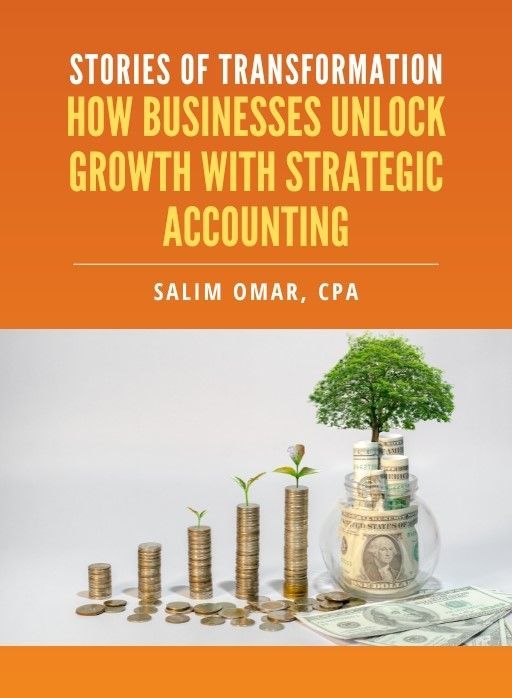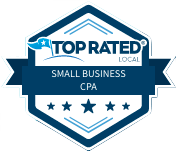Revolutionize Your Business with AI: A Guide to R&D Tax Credits and Savings

As technology continues to progress in artificial intelligence (AI), more and more companies are realizing the importance of innovation and taking advantage of opportunities to enhance their products and services. This wave of creativity is reshaping industries and leading to increased investments in research and development (R&D). In order to support this push for innovation, the government provides an R&D Tax Credit through the IRS to incentivize businesses to keep investing in developing technologies and enhancing existing ones. The credit is a valuable tool to reduce your tax liability. However, determining your eligibility and computing the credit can be challenging.
Get assistance in understanding the R&D credit from a certified public accountant (CPA) well versed in tax regulations and tax strategies.
What is the R&D Credit?
Congress enacted I.R.C. §174 in 1954 allowing business taxpayers to:
- Deduct R&D expenditures paid or incurred, or
- Elect to amortize R&D costs over not less than five years
In 1981, Congress enacted I.R.C. §41, allowing businesses to claim an income tax credit for research and experimental expenditures. The Tax Cut and Jobs Act (TCJA) amended I.R.C. §174. As of 2022, businesses can no longer deduct current R&D Expenses. Such expenses must be amortized.
R&D Credit Eligibility Criteria
Qualified Research Activities (QRAs):
- Research Activities must pass the following four tests to be considered a qualifying research activity.
- Section 174 test. Research and development expenditures must be in connection with the business’s trade or business, including new or improved prototypes, processes, formulas, inventions, patents, software, or techniques.
- Technological Information test: Qualifying research to develop a new or improved business component must rely on science principles, such as chemistry, engineering, physics, biology, or computer science.
- Process of Experimentation test. Qualifying research activities must be part of an evaluative experimentation process related to a new or improved business component’s functioning, performance, quality, or reliability.
- Elimination of Uncertainty test. The activity must be designed to eliminate uncertainty in developing or improving a product, process, or technology.
Eligibility for the R&D Credit depends on the nature of the activities undertaken. In order to qualify for the R&D credit, businesses in the United States across all industry sectors including software development and AI technology must meet the criteria of the four-part eligibility assessment.
Qualified Research Expenses (QREs):
- Wages paid to people engaged in qualified research.
- Costs of materials and supplies used in the conduct of qualified research.
- 65 % of Contract Research expenses paid to third parties for conducting qualified research on behalf of the taxpayer.
- Leased Computer or Cloud-based Provider Costs used in qualified research activities.
You should note that wages used to calculate the Work Opportunity Tax Credit cannot be used to calculate the R & D Tax Credit.
Amortization of R&D Expenses
For expenses starting in 2022, R&D expenses must be capitalized and amortized over five years if conducted in the U.S. or fifteen years, if performed abroad. The effect is to delay the immediate tax benefits.
Suppose your business cannot use the whole R&D credit this year because the tax liability is low. In that case, the credit can be carried forward to future years for up to 20 years, allowing you to use it when your tax liability increases.
Using the R&D Credit as an Offset Against Other Taxes
The Path Act of 2015 enabled new and small businesses to offset their payroll tax (FICA) with up to $250,000 of their R&D tax credit each year for up to five years. To qualify for the payroll tax offset, the business must:
- Have less than five years of gross receipts
- Have Less than $5 million in gross receipts in the year they take the R & D credit
The Act also allows small businesses to use the R&D credit to offset alternative minimum tax (AMT). to qualify:
- The business cannot be traded publicly.
- Business gross receipts averaged over the prior three tax years cannot exceed $50 million.
How Is the R&D Credit Calculated?
A business can choose one of two ways to calculate the R & D credit.
The Regular Credit Method
- Determine the base amount. This is the company’s average annual gross receipts for the past four years multiplied by a fixed-base percentage.
- Calculate the current credit rate, which is 20% of the amount by which the taxpayer’s QREs exceed the base amount.
The Alternative Simplified Credit (ASC) Method
Calculating the ASC involves three steps as follows:
- Determine the base period. This is the company’s average qualified research expenses (QREs) for the past three years.
- Multiply the base period by 50% and subtract that from the company’s current year QRE.
- Determine the credit rate by multiplying the result of Step 2 by 14%. If there were no QREs in the past three years, the credit rate would equal 6% of the current year’s QREs.
A Certified Public Account (CPA), specializing in business tax preparation can assist you in determining your credit amount using both methods, choosing the one that maximizes tax benefits.
Application Process for R&D Credit
To claim the R&D Credit, companies need to submit IRS Form 6765 Credit for Increasing Research Activities with their tax return. They must also identify qualifying expenses. It is a good idea to provide documentation showing how these expenses meets Section 41 requirements of the Internal Revenue Code.
Advantages of R&D Credits
- The R&D tax credit reduces income tax liability resulting in substantial tax savings.
- R&D credits encourage businesses to foster innovation by investing in new products, processes, or technologies.
- Many states provide credit incentives for expenditures linked to the development or improvement of products or processes resulting in added tax advantages.
- Certain small businesses can use the R&D credit to offset payroll or alternative minimum tax liabilities, providing immediate cash flow benefits.
How StraightTalkCPAs Can Help Your Company
Our team consists of expert accounting and tax professionals with in depth knowledge of accounting principles, business tax laws and regulations. We apply our expertise to ensure your tax returns are prepared accurately and in compliance with all applicable tax laws.
Our CPAs can assist your business in claiming the R & D tax credit by:
- Explaining the Eligibility criteria in layperson’s terms
- Assist in determining which expenses are eligible for the credit
- Determining if your small business can use the Payroll Tax Offset
- Ensuring the correct tax forms are accurately completed and filed
Proper documentation, an understanding of qualifying activities and expenses, and adherence to IRS rules are essential to successfully claim and defend R&D credits.
Let's discuss your tax and accounting needs in a free consultation.
Free eBook:
Stories of Transformation


Salim is a straight-talking CPA with 30+ years of entrepreneurial and accounting experience. His professional background includes experience as a former Chief Financial Officer and, for the last twenty-five years, as a serial 7-Figure entrepreneur.




